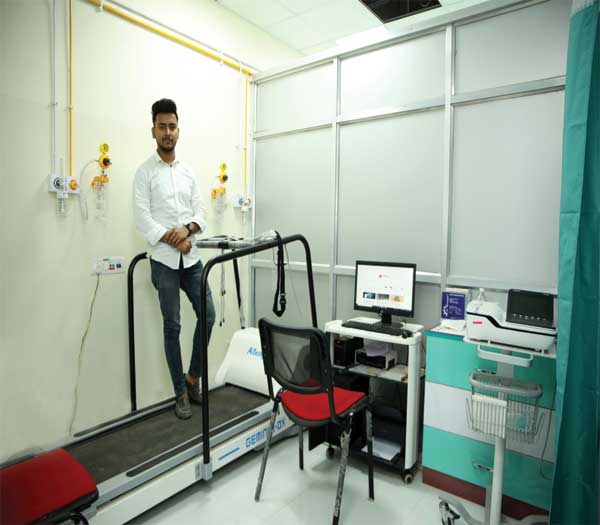
24/7 Emergency CALL - 7365077702
* Open 365 Days
* Affordable Charges
* 24/7 Availability of MD Doctors
* 129 Normal Beds & 50 Special Beds Available
* Highly Qualified & Experienced Doctors
* Grade A in Swasthya Sathi Scheme
* Renowned for Neonatal & Pediatric Care
OUTDOOR
Our hospital offers excellent outdoor (OPD) facilities to provide convenient and efficient healthcare services to patients who do not require hospitalization. Our outpatient department is designed to ensure smooth consultations, diagnostics, and treatments for various medical conditions.
Today's Doctor Available (08-12-2025)
About Us
THE O2 HOSPITALS aims to bring quality healthcare and affordibility for everyone. ICU, OT, XRAY, CT SCAN, PATHOLOGY and many other services are provided. 24X7 HDU , ICU , NICU , PICU , and 24x7 MD MEDICINE doctor available.
-
Advanced And High-end Medical Equipments
For Better diagnostic and accurate Reporting we use top medical equipments
-
Affordable and Cost Effective
We provides a high level of health benefit while remaining within a reasonable price range
-
Transportation Friendly Location
Automobile. Train , And Local Transit are 24 Hour Availbale
Doctors
Departments
Approved Bed
Patients Treated
Our Super Speciality Departments
24/7 Emergency Services Available with Top-Notch Doctors & Qualified Nursing Staff.

ICU Facilities
Intensive care provides the highest level of treatment for critically ill patients with potentially recoverable life-threatening conditions.
HDU Facilities
Provides invasive monitoring and support for patients with or at risk of developing acute or acute-on-chronic single-organ failure.
Modular OT
A compact and highly sterilized setup with advanced air filters to regulate airflow. Includes advanced anesthesia workstations.
NICU
Newborn care includes immediate post-birth care, thermal regulation, and continuous monitoring for optimal health and development.
PICU
Children require specialized care as they may not express their discomfort clearly. Our PICU is designed to provide the best pediatric critical care.
CT Scan
The most advanced Siemens SOMATOM GO NOW is available for scanning all types of diseases and performing angiograms.
Endoscopy, Colonoscopy & ERCP
Dr. Biswajit Banik, DM Gastro, performs endoscopy, colonoscopy, and ERCP every Saturday.
Departments
Our Super Specialty Departments
Specialties Available in OPD:
Pediatrics – Specialized care for infants, children, and adolescents.
Neurology – Treatment for brain, nerve, and spinal disorders.
Gastroenterology – Digestive system and liver disease management.
General Medicine – Comprehensive internal medicine care.
Psychiatry – Mental health and psychological well-being support.
Hematology – Diagnosis and treatment of blood disorders.
Radiology – Advanced imaging and diagnostic services.
Dermatology – Skin, hair, and nail disease treatments.
Orthopedics – Bone, joint, and musculoskeletal care.
General Surgery – Surgical procedures for various health conditions.
Our well-equipped OPD ensures fast, efficient, and quality medical services to cater to all patient needs, providing accessible healthcare every day.
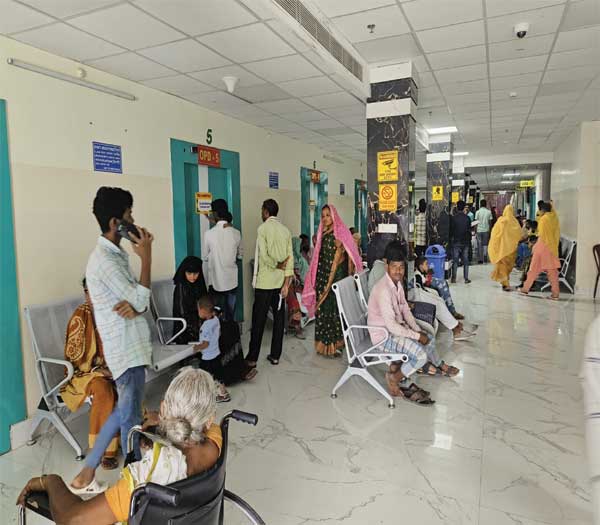
24x7 Inpatient Department
Our Inpatient Department is always ready to provide critical and essential healthcare services.
Available inpatient facilities include:
ICU – Intensive Care Unit for critical patients.
HDU – High Dependency Unit for patients requiring close monitoring.
NICU – Neonatal Intensive Care Unit for newborns in need of specialized care.
PICU – Pediatric Intensive Care Unit for critically ill children.
Male Ward – Dedicated care for male patients.
Gynae Ward – Specialized ward for women's healthcare.
Medicine Ward – Comprehensive treatment for various medical conditions.
Day Care – Short-term medical procedures without hospitalization.
Dialysis – Advanced dialysis facilities for kidney patients.
Dental and Maxillofacial Surgery – Specialized dental and facial surgeries.
General Surgery – A wide range of surgical treatments.
24x7 Emergency Services with MD Doctors available for immediate medical attention.
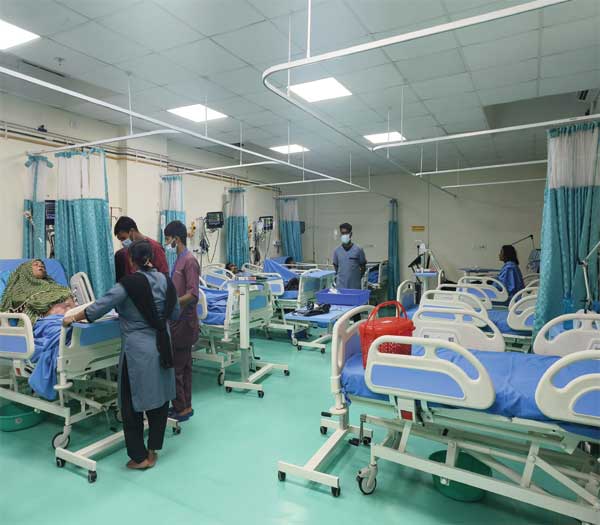
Diagnostic Laboratory
We use the most advanced laboratory equipment.
All types of blood tests and analyses are performed by our MD doctors and experienced qualified lab technicians.
- Microbiology
- Hematology
- Immunology
- Clinical Chemistry
- Coagulation
- Histopathology
- Urinalysis
- Serology

Modular Operation Theater
4 State-of-the-art Modular Operation Theaters
Equipped with the latest surgical technology to ensure safe and effective procedures.

24x7 Emergency Care
Immediate medical attention available round the clock.
Our emergency department is equipped with advanced life-saving facilities and highly trained doctors and nurses to handle all medical emergencies.

Critical Care Unit - CCU/ICU
Comprehensive critical care for patients in need of intensive monitoring.
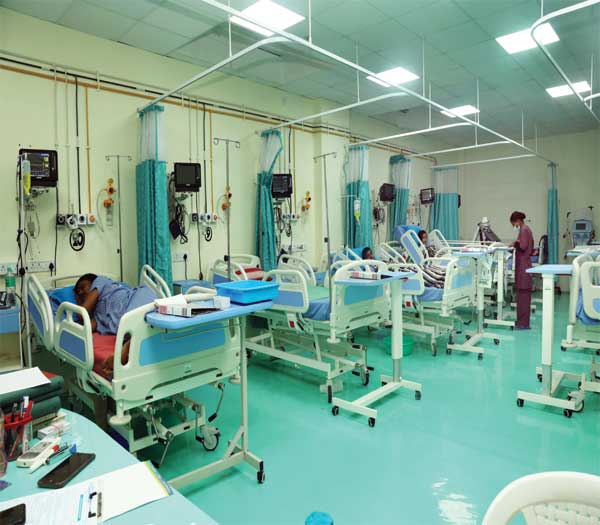
Gastroenterology
Expert care for digestive system disorders.
Our Gastroenterology department specializes in diagnosing and treating conditions related to the digestive tract, liver, pancreas, and gallbladder. Services include:
- Endoscopy and Colonoscopy
- Liver Disease Management
- Gastrointestinal Surgery
- Treatment for Acid Reflux and Ulcers
- Hepatitis and Liver Cirrhosis Care
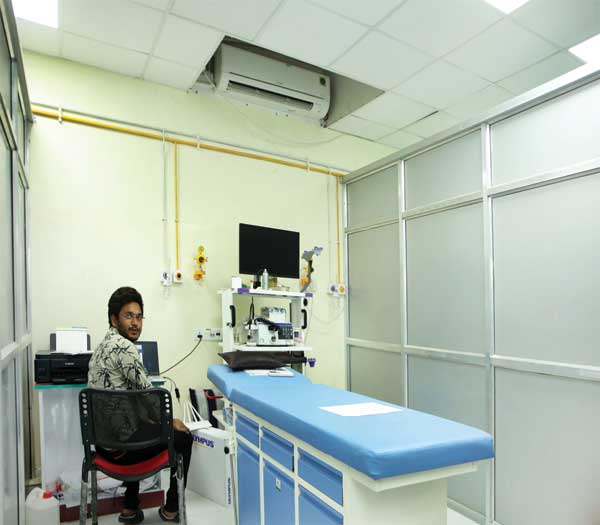
Orthopedics
Comprehensive bone and joint care.
Our Orthopedic department provides advanced treatment for musculoskeletal conditions, including:
- Fracture Management
- Joint Replacement Surgery
- Sports Injury Treatment
- Arthroscopy and Spine Surgery
- Physiotherapy and Rehabilitation

Reception
Your first point of contact for assistance.
Our Reception Desk is always available to assist patients and visitors with:
- Appointment Scheduling
- Patient Registration
- Billing and Insurance Assistance
- Hospital Navigation and Information
- Emergency Response Coordination

Dental Care
Advanced dental treatments for all ages.
Our Dental department offers a range of treatments, including:
- Root Canal Treatment
- Orthodontics (Braces & Aligners)
- Dental Implants and Prosthetics
- Cosmetic Dentistry
- Pediatric and Preventive Dentistry

Outdoor / Indoor Doctors
Our Departmental Doctors Availability
Gallery
A Glimpse into Our Excellence in Healthcare.
Contact
Contact Us
Contact details Are given below
Location
Pakur Road, near Jama Masjid, Chaskapur, 742202
Call Us
+19 7365077702 / 7047988702
Email Us
theo2hospitals@gmail.com




